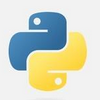How does Python 2 compare string and int? Why do lists compare as greater than numbers, and tuples greater than lists?(Python 2 如何比较字符串和整数?为什么列表比较大于数字,而元组大于列表?)
问题描述
The following snippet is annotated with the output (as seen on ideone.com):
print "100" < "2" # True
print "5" > "9" # False
print "100" < 2 # False
print 100 < "2" # True
print 5 > "9" # False
print "5" > 9 # True
print [] > float('inf') # True
print () > [] # True
Can someone explain why the output is as such?
Implementation details
- Is this behavior mandated by the language spec, or is it up to implementors?
- Are there differences between any of the major Python implementations?
- Are there differences between versions of the Python language?
From the python 2 manual:
CPython implementation detail: Objects of different types except numbers are ordered by their type names; objects of the same types that don’t support proper comparison are ordered by their address.
When you order two strings or two numeric types the ordering is done in the expected way (lexicographic ordering for string, numeric ordering for integers).
When you order a numeric and a non-numeric type, the numeric type comes first.
>>> 5 < 'foo'
True
>>> 5 < (1, 2)
True
>>> 5 < {}
True
>>> 5 < [1, 2]
True
When you order two incompatible types where neither is numeric, they are ordered by the alphabetical order of their typenames:
>>> [1, 2] > 'foo' # 'list' < 'str'
False
>>> (1, 2) > 'foo' # 'tuple' > 'str'
True
>>> class Foo(object): pass
>>> class Bar(object): pass
>>> Bar() < Foo()
True
One exception is old-style classes that always come before new-style classes.
>>> class Foo: pass # old-style
>>> class Bar(object): pass # new-style
>>> Bar() < Foo()
False
Is this behavior mandated by the language spec, or is it up to implementors?
There is no language specification. The language reference says:
Otherwise, objects of different types always compare unequal, and are ordered consistently but arbitrarily.
So it is an implementation detail.
Are there differences between any of the major Python implementations?
I can't answer this one because I have only used the official CPython implementation, but there are other implementations of Python such as PyPy.
Are there differences between versions of the Python language?
In Python 3.x the behaviour has been changed so that attempting to order an integer and a string will raise an error:
>>> '10' > 5
Traceback (most recent call last):
File "<pyshell#0>", line 1, in <module>
'10' > 5
TypeError: unorderable types: str() > int()
这篇关于Python 2 如何比较字符串和整数?为什么列表比较大于数字,而元组大于列表?的文章就介绍到这了,希望我们推荐的答案对大家有所帮助,也希望大家多多支持编程学习网!
本文标题为:Python 2 如何比较字符串和整数?为什么列表比较大于数字,而元组大于列表?


- 如何将一个类的函数分成多个文件? 2022-01-01
- 使用Heroku上托管的Selenium登录Instagram时,找不到元素';用户名'; 2022-01-01
- 如何在 python3 中将 OrderedDict 转换为常规字典 2022-01-01
- padding='same' 转换为 PyTorch padding=# 2022-01-01
- 沿轴计算直方图 2022-01-01
- python-m http.server 443--使用SSL? 2022-01-01
- 如何在 Python 的元组列表中对每个元组中的第一个值求和? 2022-01-01
- python check_output 失败,退出状态为 1,但 Popen 适用于相同的命令 2022-01-01
- pytorch 中的自适应池是如何工作的? 2022-07-12
- 分析异常:路径不存在:dbfs:/databricks/python/lib/python3.7/site-packages/sampleFolder/data; 2022-01-01




